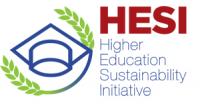University of Alberta- Building a Sustainable Future
Description
The campus sustainability initiative is guided by the university's sustainability plan (i.e., Building a Sustainable Future). The plan is divided into 10 five key focus areas: leadership, education & research, operations & infrastructure, community & culture and health & wellbeing. The plan has 23 goals and 98 strategies for making progress on campus sustainability. The Office of Sustainability coordinates the collection and promotion of sustainability initiatives, offers facilitation and support to assist with implementation of sustainability initiatives, and coordinates reporting on progress of the Sustainability Plan. Working in collaboration with the Office of Sustainability, the following leaders facilitate the implementation and coordination of sustainability strategies in this plan:
- Chief Sustainability Officer, Office of Sustainability
- Manager, Energy Management & Sustainable Operations, Facilities & Operations
- Director for Sustainability Scholarship and Education, Office of the Provost
These leaders work with with unit leads, organizations and established working groups, identify potential collaborators on strategies and provide logistical support for action planning and reporting. Together they identify potential collaborators for each strategy/goal and capture this information in an internal implementation framework. The implementation framework will help build connections between potential collaborators, identify the need for resources or funding, establish performance indicators, and collect the information needed to inform a progress report on this plan. The progress report will be shared with high-level committees and executive champions.
The Office of Sustainability offers a range of programs supporting capacity-building and technology transfer including: <br />
<br />
- Leading Sustainability At Work. Participants join a 3-day class and work collaboratively with their peers to gain skills, share insights and develop a plan for their area. <br />
- Student Sustainability Summit. Participants are exposed to a range of sustainability topics and skill-building activities. <br />
- Green Labs Leaders Network. This program is a community of practice associated with energy efficiency, water conservation and waste reduction.<br />
- Green Spaces Certification. Participants implement a range of sustainable practices in events, offices, labs, residences and food vending spaces.<br />
- Student experience programs. Students are offered opportunities to develop their skills through internships, research placements and paid positions. <br />
<br />
Feedback
Action Network


Timeline
Entity
Geographical coverage
More information
Countries
Contact Information
Trina Innes, Chief Sustainability Officer
